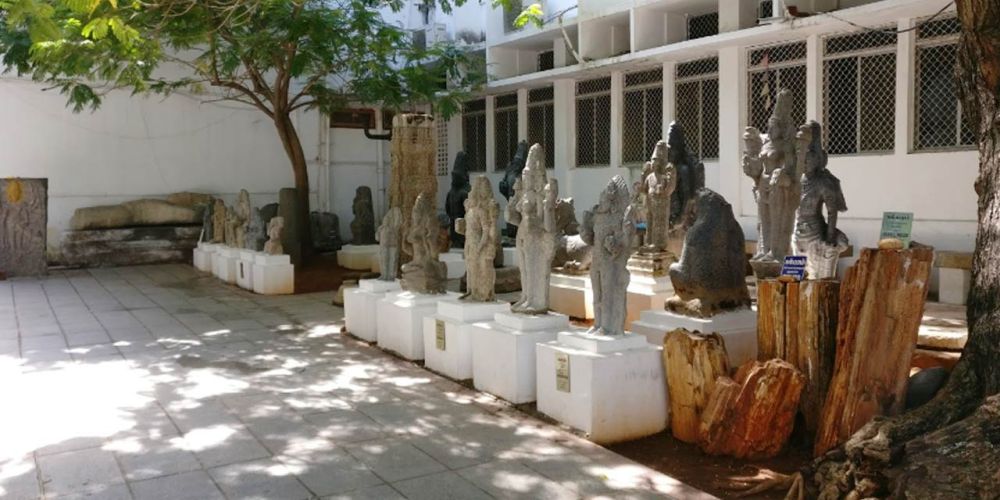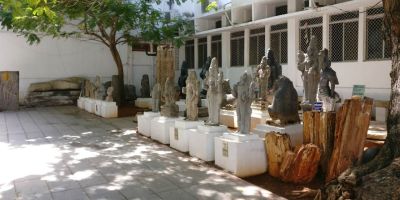

Pondicherry Museum, a repository of the region's past, houses an exquisite collection of Chola Dynasty artifacts that date back to between the 9th and 13th centuries. Visitors can immerse themselves in the intricacies of South India's renowned temple architecture and bronze sculptures that have stood the test of time. Each piece tells a unique story and represents a significant aspect of ancient Tamil culture. The detailing in the craftsmanship exemplifies the skill and artistry of the Chola era, offering insights into the religious and sociocultural life of that period. This section of the museum allows visitors to get up close with the past, admire the antique jewelry, and understand the historical significance of the Chola rule.
Pondicherry Museum is a treasure trove of French colonial heritage, offering visitors an immersive glimpse into the erstwhile French-occupied India. The French Colonial Heritage Exhibit boasts an assortment of French furniture, crockery, and artifacts from the colonial period that demonstrate the European influence on the local culture and architecture. Walking through the gallery, one can not only admire the luxurious lifestyle of the French elite but also learn about the Indo-French cultural assimilation that shaped the unique identity of Pondicherry. This exhibit provides a narrative of the administrative, social, and domestic life during the colonial times through its meticulously preserved collection of memorabilia, paintings, and documents.
The Aurobindo and French India Gallery at Pondicherry Museum pays homage to the spiritual leader, philosopher, and yogi Sri Aurobindo, who lived and worked in Pondicherry for many years. The gallery displays photographs, documents, and personal belongings that offer a peek into his life and influence on the freedom struggle and spiritual awakening in India. It also sheds light on the French presence in India, showcasing relics, administrative records, and other historical pieces that tell the tale of French India. This enlightening gallery provides a combination of spiritual insight and historical knowledge that is bound to engage visitors and involve them more deeply in the unique history of Pondicherry.
The Pallava Dynasty Sculpture Gallery at the Pondicherry Museum offers history buffs and art lovers an opportunity to delve into the legacy of the Pallavas - a South Indian dynasty that preceded the Cholas. This gallery houses stone sculptures and inscriptions that are strikingly expressive and betray the intricate carving techniques of the era. Artifacts include depictions of Hindu gods, mythological scenes, and inscribed pillars that offer a fascinating glimpse at the religious fervor, language, script, and the socio-political customs of the Pallavas. Visitors can immerse themselves in the detailed workmanship of sculptures and gain a rich understanding of the artistic and cultural heritage of South India.
The rich archaeological past of the region is celebrated in the Courtallam and Megalithic Collection at the Pondicherry Museum. This section displays a variety of megalithic burial urns, sarcophagi, and other archaeological finds from the excavations at Courtallam. The items on display are remarkable for their historical value and provide insights into ancient burial practices and the daily life of those times. The earthenware and burial urns, some of which are adorned with intricate patterns, are key to understanding the beliefs and rituals related to death and the afterlife as perceived by the early inhabitants of Tamil Nadu.
Coin enthusiasts and historians can rejoice in the Numismatic Collection at the Pondicherry Museum, which presents an extensive assemblage of coins that trace the economic and trade histories of various ruling dynasties in the region. The collection ranges from ancient coins issued by Roman, Chola, Pallava, and Vijayanagara emperors to colonial-period French and Dutch currencies. This exhibit offers insights into the evolution of coinage, the metals used, minting technologies, and the economic relations between Pondicherry and other parts of the world. It's a mini time capsule that underscores the significance of trade and economy in the development of civilizations.
For those intrigued by the natural history and geology of the region, the Geology Room at the Pondicherry Museum provides a comprehensive display of fossil specimens, minerals, and rocks. This exhibit showcases the geological diversity and richness of the Tamil Nadu and Pondicherry regions. It includes samples of sedimentary, igneous, and metamorphic rocks, as well as a selection of fossils that tell the ancient story of the subcontinent's geographical transformations. The Geology Room is an educational journey through time, illustrating the earth's evolutionary process over millions of years.
Catering to the curiosity of young minds, the Children's Museum is a section within the Pondicherry Museum that presents history and culture in a more interactive and engaging way. This area is tailored for children and includes exhibits that are tactile and visually stimulating. With models, replicas, and interactive displays, the Children’s Museum is designed to spark interest in the rich heritage of the region while being educational and fun. It's a great way for kids to learn about archeology, history, and art, making it a fulfilling experience for families.
The Colonial Furniture and Porcelain Room at the Pondicherry Museum offers a refined look into the luxurious domestic interiors of the French colonial era. The room is elegantly set up with period furniture, including intricately carved and polished beds, writing desks, dining tables, and wardrobes. The porcelain collection features fine china used by the French residents and gives visitors an understanding of the aesthetic sensibilities and the cross-cultural influences of the time. Each piece is not only a work of art but also a silent witness to the daily life and social customs of the French colonial period.
The Pondicherry Museum also features a Temporary Exhibition Space that hosts an ever-changing roster of themed displays and special exhibitions. These short-term exhibits are frequently organized to showcase specific aspects of art, history, or culture, and often involve collaborations with artists, historians, and institutions. Visitors can expect fresh and thought-provoking installations, such as traveling exhibits, contemporary art showcases, or historical retrospectives. These temporary exhibitions add a dynamic dimension to the museum experience, ensuring that there is always something new to discover.
